TABLE OF CONTENTS
How many watts does a motherboard use? Should your choice of motherboard impact your choice of power supply?
I’ll be tackling these and a few closely related questions in the article below, so stick around and we’ll walk through the answers you’re looking for.
Let’s dive right in!
How Many Watts Does A Motherboard Use?
The answer is “it depends”, but also “not very much”, at least not compared to other components.
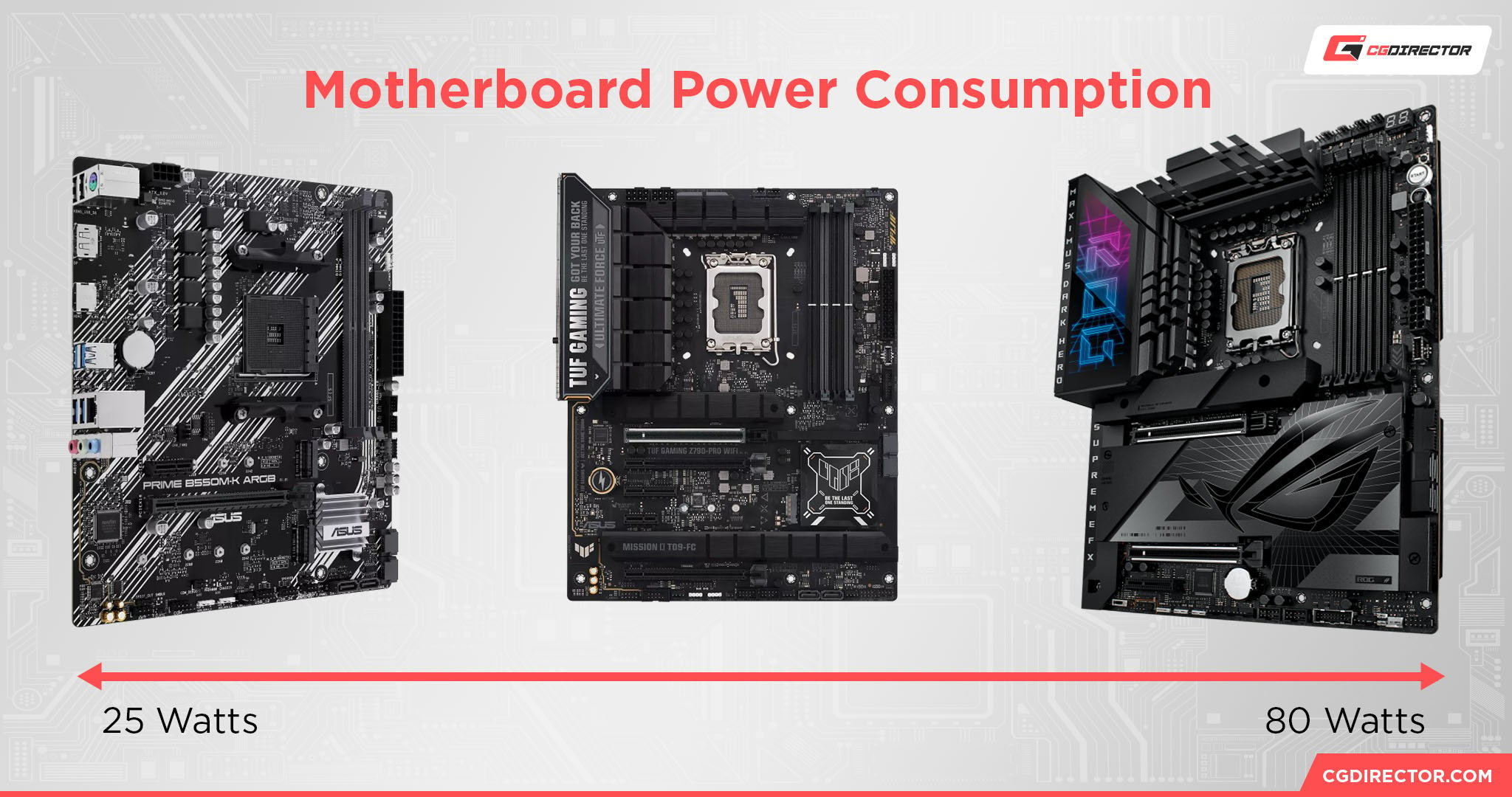
Source: Asus
The power consumption of a modern motherboard tops out at around 80 Watts but starts at around 25 Watts.
The maximum power supplied by a 24-pin motherboard power cable tops out at 300 Watts, but fortunately, your motherboard won’t actually be pushing that to full utilization— however, if you’re using an expansion card powered by the motherboard instead of (or in addition to) an additional cable to the PSU directly to the card, that power will come from that PCIe slot (and ultimately from the ATX Power connector).
We aren’t talking about whatever you’ve attached to your motherboard just yet, though.
Your motherboard by itself, with no CPU, RAM, or GPU installed, will stay comfortably in that 25-80 Watts range, with 50+ Watts requirements restricted to high-end boards.
Why Motherboards Don’t Use Very Much Power, Usually
As one may expect, motherboards don’t use very much power on their own.
This is because your motherboard is more or less the “backbone” of your PC build through which everything else connects, and not really a component with processing power in its own right.
That “backbone” role is obviously of great importance, though, so one shouldn’t underestimate the importance of a motherboard even if it doesn’t use very much power by itself.
Granted, there may be more variance to motherboard power requirements than you would initially expect.
The reason why high-end motherboards use 50-80 Watts of power is usually tied to things like onboard RGB lighting, additional fan or RGB headers, and even improvements to Voltage Regulation Modules (VRMs).
You can usually tell which components on a motherboard draw a lot of power or are expected to do so in certain scenarios. These components are outfitted with heatsinks or even heatpipes and active cooling (fans) in rare instances. The chipset certainly is a component that has a comparatively high power draw. If you’re using many NVMe SSDs, and SATA storage that is hooked up to the chipset through chipset-PCIe lanes, this can increase a chipsets power draw considerably. In most cases, though, even if the chipset is outfitted with an active fan, the fan is off and rarely spins up.
But even if we’re talking about comparatively high power draw, in motherboard terms this isn’t more than 10w on a X570 chipset, as tested by der8auer recently. Of course, if you’re running a TRX40 chipset, or are overclocking your CPU, the additional strain on the VRMs and other components can add up to higher power draw, up to about 80 watts maximum.
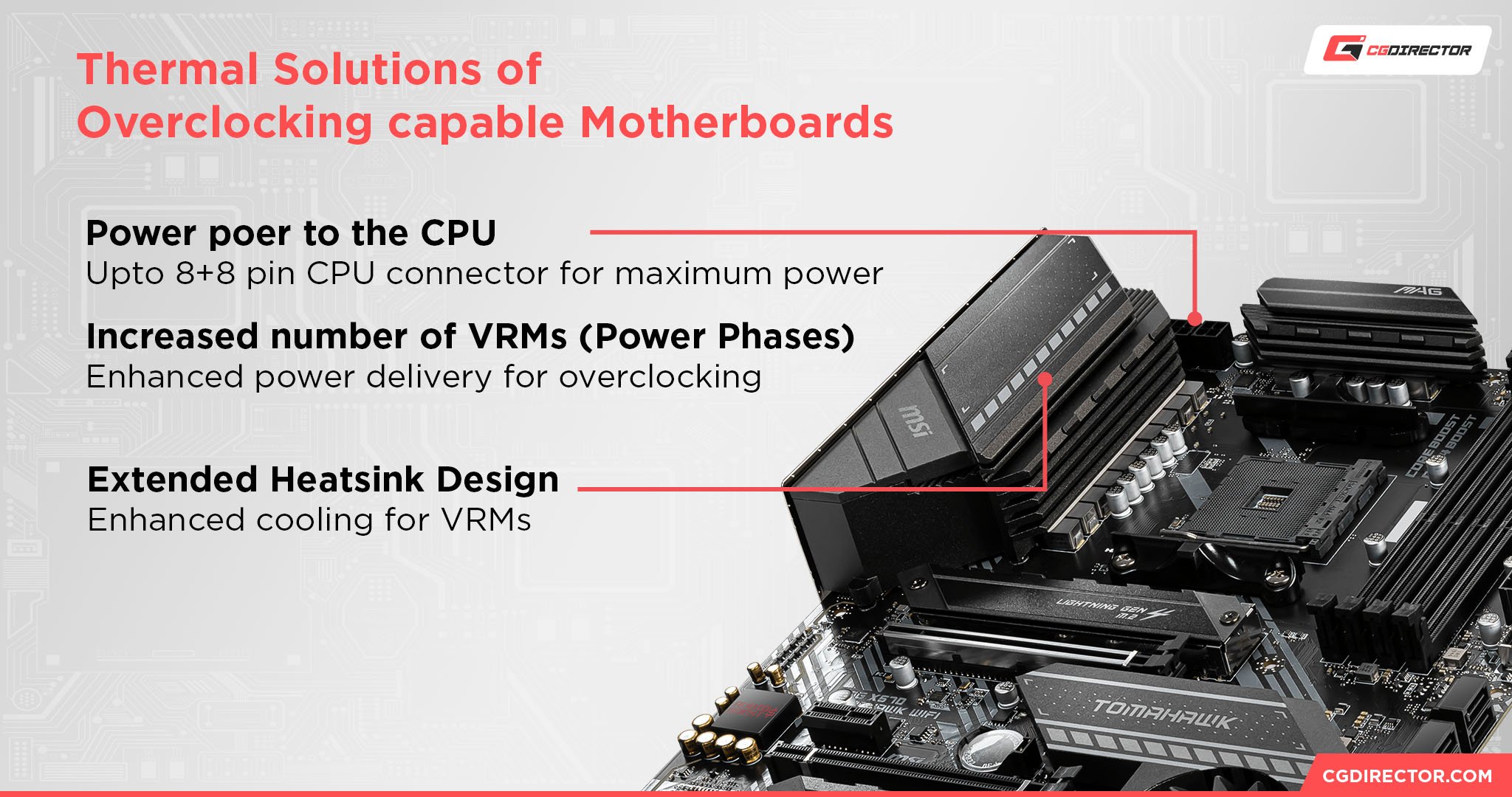
Source: MSI
VRMs are actually one of the most important parts of any motherboard, it turns out.
While your CPU can be one of the most power-hungry components in your PC, it still needs delicately controlled voltage in order for it to run properly without overheating, hence the need for VRMs to filter and “clean” power coming from your 8-pin CPU power cable before it gets used by your CPU and exhausted as heat.
With higher-end boards, especially those suited to CPU overclocking, VRMs see an increase in power phases and heatsink size to facilitate this higher performance.
However, an 80 Watt motherboard used in the right PC build (mid-range or high-end) will still not come close to being the most power-intensive component in the machine, with the 700-1000+ Watt PSUs common in high-end PCs remaining unbothered by motherboard power requirements.
FAQ
What Components Use The Most Watts In a PC?
As established throughout this article, motherboards use relatively little power on their own.
The power requirement of a motherboard doesn’t even get close to 100 Watts until you breach high-end motherboards, and even then they’re unlikely to pass that mark any time in the near future, since the 300W 24-pin motherboard power cable is also meant to power your RAM, M.2 drives, fans, and etc, not just the board by itself.
So, what components connected to your PC actually use the most power? Here’s a quick list:
- GPU — Slot-powered GPUs are restricted to 75 Watts. With additional 8-pin Power Cables and overclocking, though, modern high-end cards like the RTX 4090 can exceed 400 Watts in power consumption!
- CPU — The Intel Core i9-13900K tops out at 253 Watts power consumption at Turbo. Meanwhile, in the HEDT space, the Ryzen Threadripper 5995WX is rated for 280 Watts but can reach up to 400 Watts when unlocked.
- Everything Else — Yup. Compared to the main two culprits, the rest of your system is unlikely to draw much power. Even the fastest NVMe SSDs, which can sometimes come with heatsinks to keep them cool, rarely exceed 7 Watts of power consumption. Classic 3.5-inch HDDs don’t even exceed 9 Watts.
Really, it’s the CPU and the GPU that are the biggest culprits for high power consumption in a PC build, but that by itself doesn’t tell the full story, especially if you aren’t using high-end components like the ones used as examples above.
It turns out that once you get past the main two power-hungry components (which are also doing the actual processing inside your PC), your motherboard is actually consuming more power than most of the components connected to it!
How Much Power Does a PC Use?
Curious about how much power your entire PC uses instead of just the motherboard?
Truthfully, the answer to this is going to vary depending on the exact purpose of your PC build and how you’ll be using it. I’ve tackled this question in greater detail in a larger How Much Power Does a PC Use Guide, but it’s worth addressing in passing here.
Basically, your PC power consumption can range anywhere from 300 Watts (on the entry-level) to exceeding 600-900 Watts on the high-end, especially as you start using your PC for gaming or professional rendering purposes.
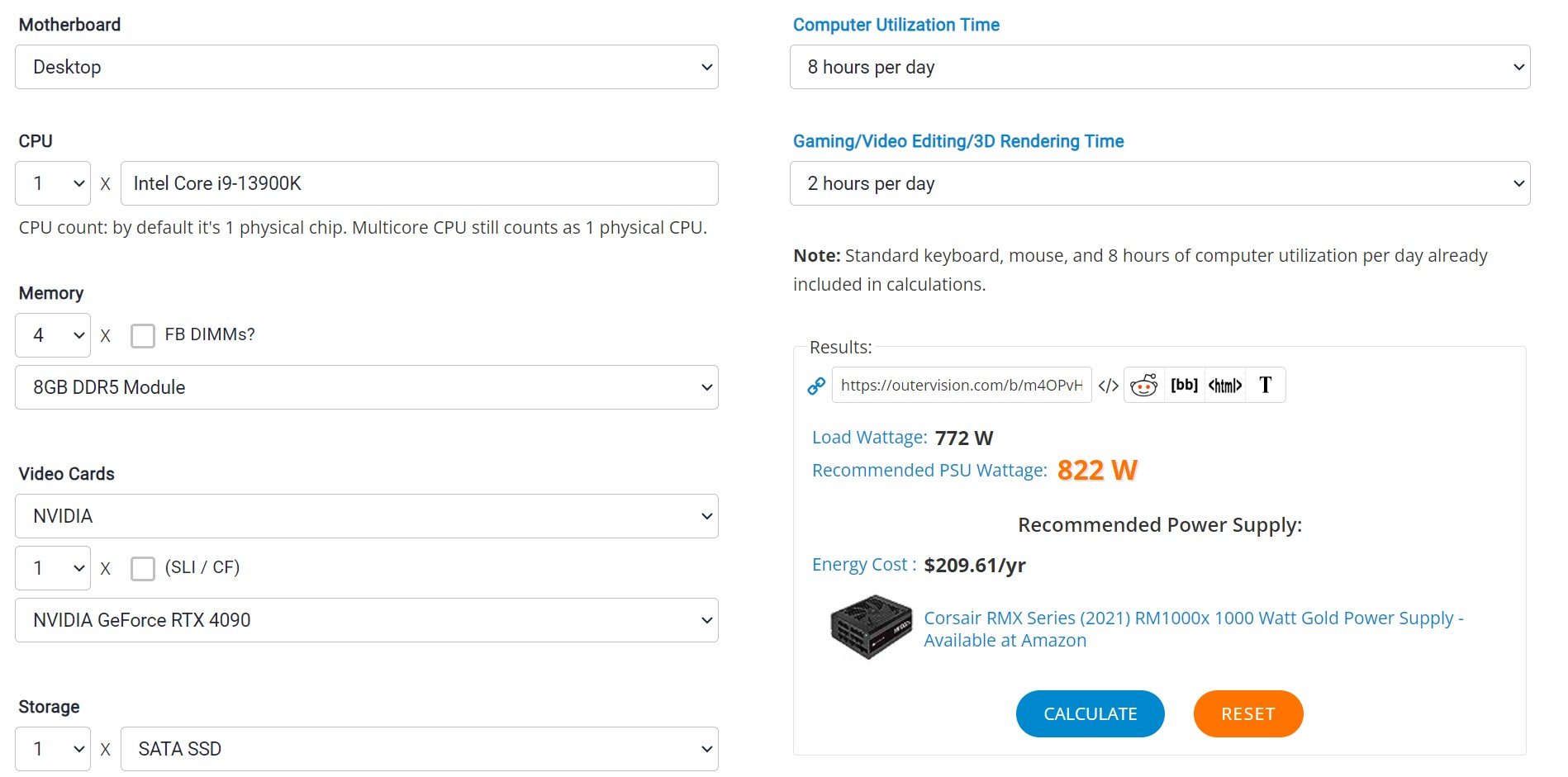
Image Credit: Outervision
Provided your motherboard is scaling properly with your other components, it’s unlikely to be the reason you need to upgrade your power supply.
How Much More Wattage Should My PSU Have Than My PC Parts?
Ideally, your PSU should offer at least 10% or so of headroom over your system’s maximum wattage.
This will allow your PSU to run at its proper level of efficiency since it will use more power and exhaust more heat if it’s constantly being pushed to capacity.
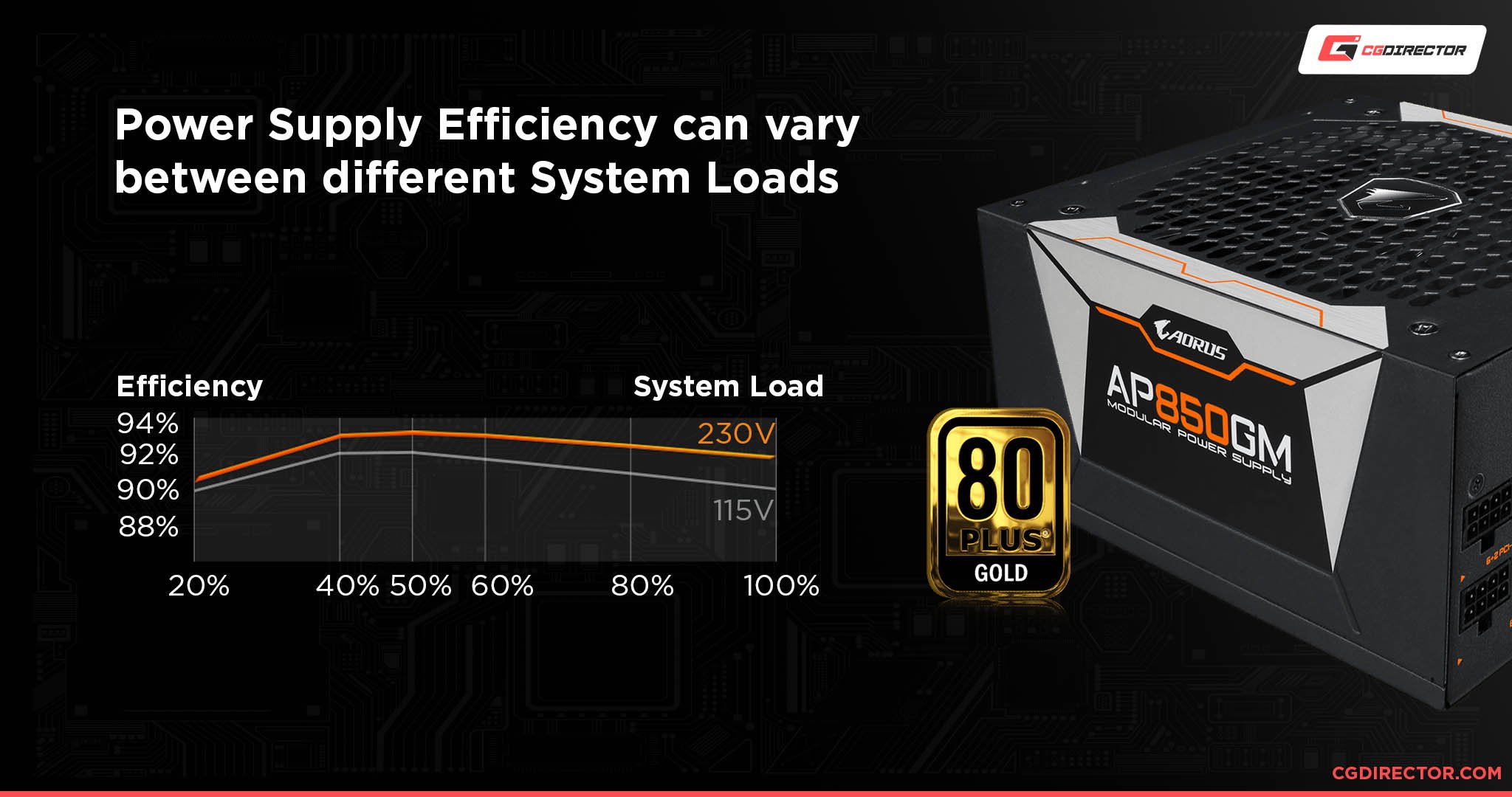
Source: Gigabyte
Your motherboard is unlikely to be the culprit here unless you happened to match a high-end board with an otherwise low-end PC build.
For more detailed information and tips on buying a power supply, consider consulting Jerry’s Power Supply Guide. For now, let’s get things wrapped up here!
Over to You
And that’s all, for now!
The answer to “How Many Watts Does a Motherboard Use?” tops out at 80 Watts, but realistically can start as low as 25 Watts with a low-power PC.
And that’s not even getting into all-in-ones and portable PCs that can have an even lower TDP than that for all their components combined!
As long as your PC is reasonably balanced (ie, you aren’t stuffing a high-end board into a PC build with a 400 Watt PSU), you don’t really need to worry about your motherboard’s power consumption as an end user.
But what do you think?
For any comments or further questions about motherboards or PC hardware in general, feel free to fire off in the comments section below. The comments are actively tended to by myself and other CGDirector Team members, so we’ll be happy to help as needed.
You can also try out our Forums, should you wish to engage in longer-form discussions with other Enthusiasts and Experts.
Until then or until next time, happy building! And remember: if you want to overclock your CPU, get a high-power, high-end motherboard that can actually support all that extra voltage and heat you’ll be dealing with.
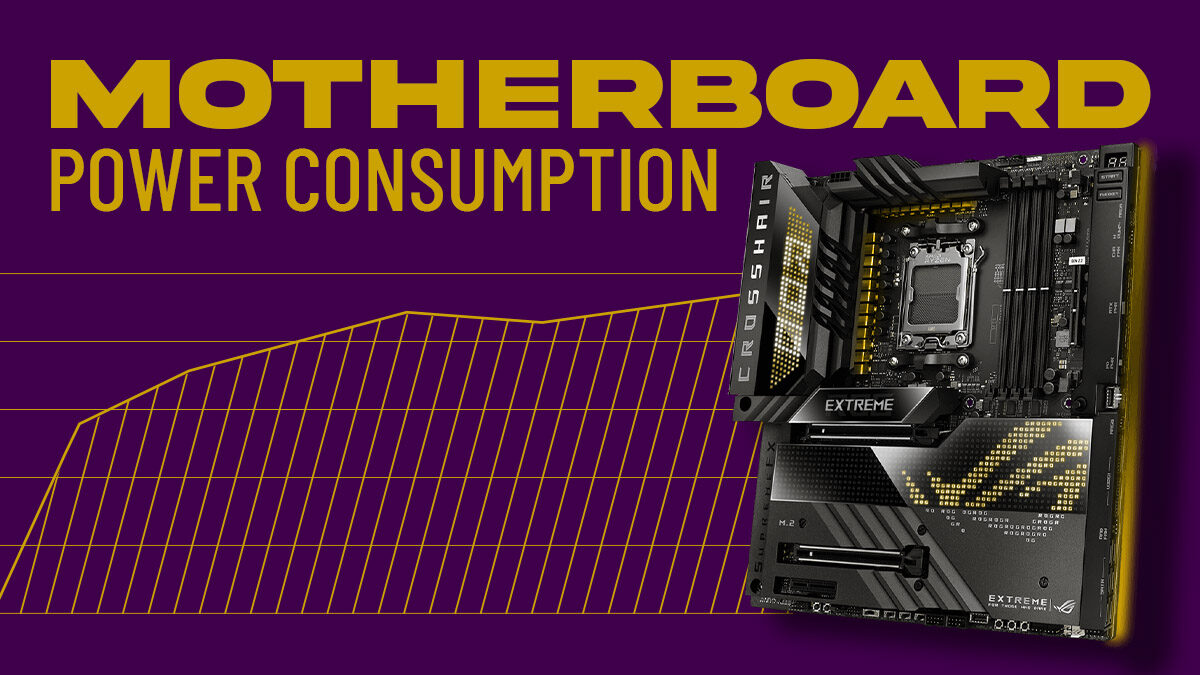
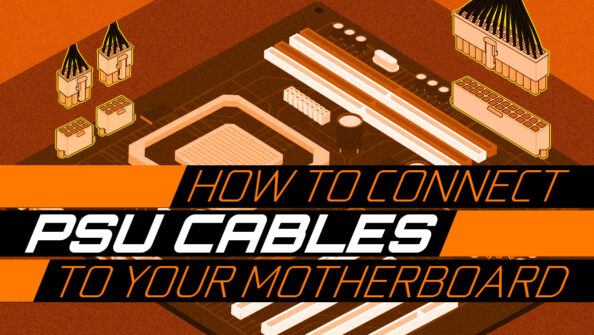
![Where Do You Connect PC Fan PWM Cables To? [Beginner’s Guide] Where Do You Connect PC Fan PWM Cables To? [Beginner’s Guide]](https://www.cgdirector.com/wp-content/uploads/media/2023/12/Where-Do-PWM-Cables-Go-Beginners-Guide-Twitter-1-594x335.jpg)
![How To Connect Front Panel Cables To Your Motherboard [Guide] How To Connect Front Panel Cables To Your Motherboard [Guide]](https://www.cgdirector.com/wp-content/uploads/media/2024/01/How-To-Connect-Front-Panel-Cables-To-Your-Motherboard-Twitter-copy-1-594x335.jpg)
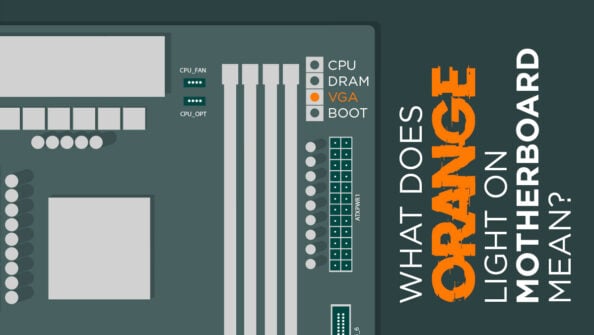

0 Comments